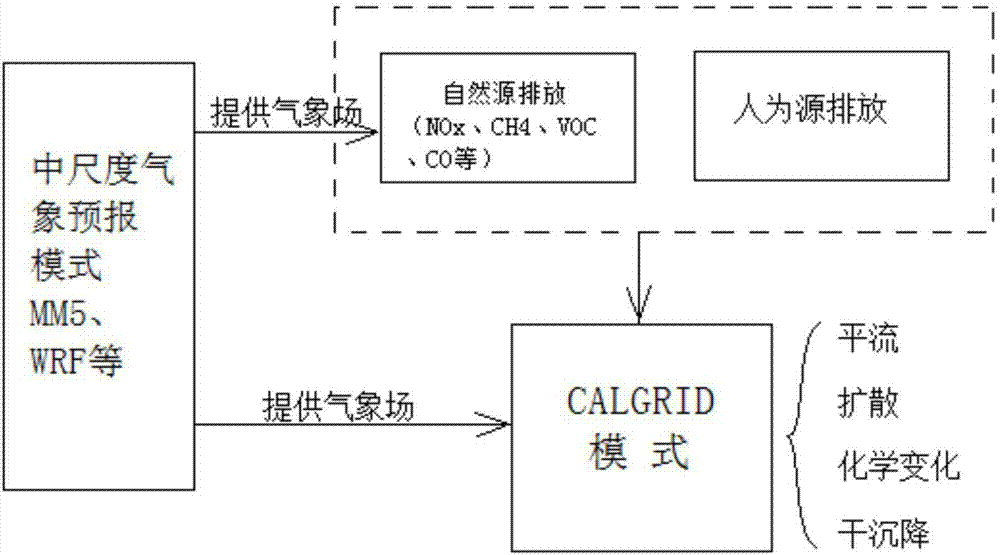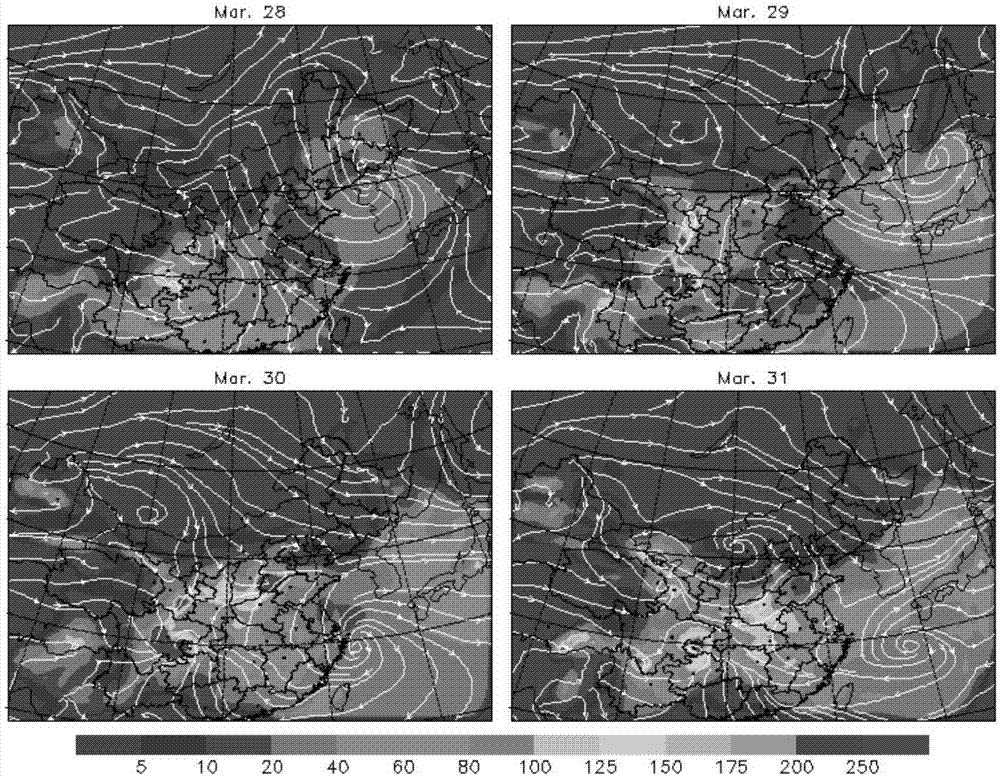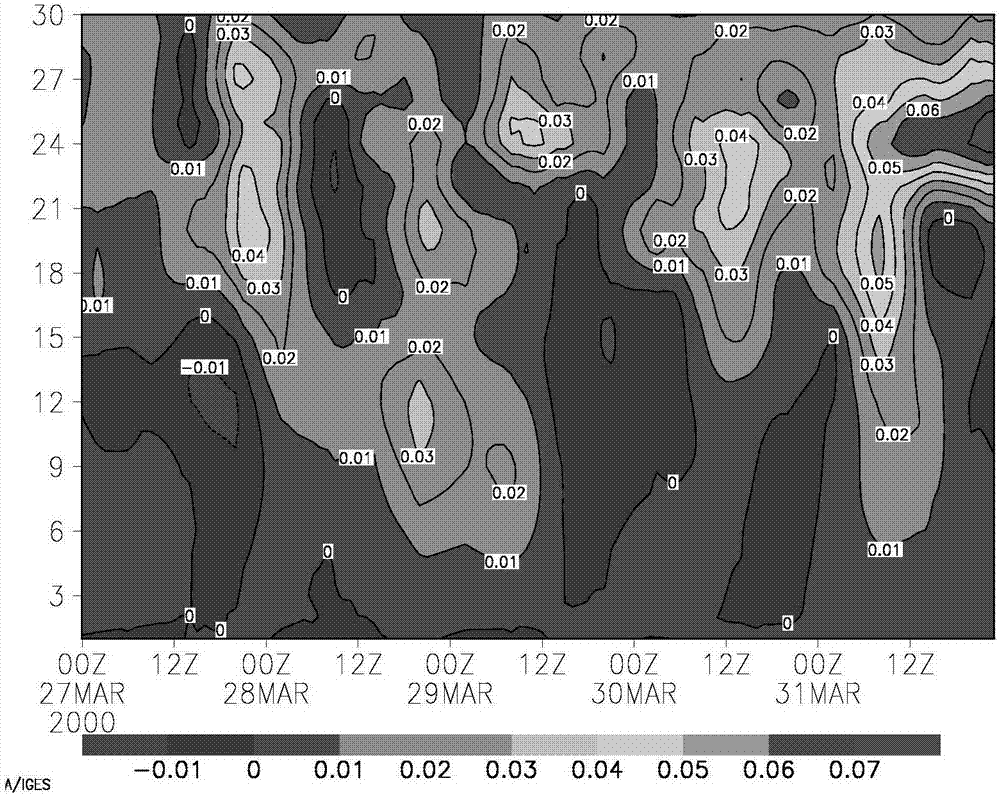Medium-scale atmospheric photochemical pollution simulation prediction algorithm increasing meteorological model interface
A technology of photochemical pollution and prediction algorithm, applied in the field of atmospheric environmental pollutant detection, can solve problems such as limited application, difficulty in obtaining, and complicated steps of CALGRID mode
- Summary
- Abstract
- Description
- Claims
- Application Information
AI Technical Summary
Problems solved by technology
Method used
Image
Examples
Embodiment 1
[0075] Embodiment 1: as Figure 1~4 As shown, the pollution under the control of the high-pressure system and the typhoon system, which has an important impact on the air quality in South China, is used as a typical case to carry out research. Table 2 shows some parameter settings of WRF and CALGRID for simulation.
[0076] Table 2 Study case description and model parameter settings
[0077]
[0078]
[0079] (1) Case 1: From March 28 to 31, 2000, photochemical pollution under the control of high-voltage systems
[0080]The photochemical pollution process that occurred in Hong Kong from March 28 to 31, 2000 was a typical combined pollution of local photochemical and regional transmission, which lasted for three days and affected the whole territory of Hong Kong (Wang et al., 2004) . Analysis of hourly concentration changes, diurnal concentration changes, meteorological conditions, local photochemical mechanism analysis and transport mechanism analysis based on synchro...
Embodiment 2
[0083] Example 2: On July 2-5, 2001, the photochemical pollution under the control of the typhoon system
[0084] Typhoon "Utor" is a tropical cyclone that had a major impact on Guangdong in 2001. Its development process is as follows: a tropical depression formed in the Northwest Pacific Ocean on July 1; it strengthened into a tropical storm on the 2nd; it strengthened into a typhoon on the afternoon of the 3rd and reached its maximum intensity in the evening; The belt caused serious damage in the Philippines and Taiwan, China; entered the South China Sea in the early morning of the 5th, and its moving speed slowed down to 20 kilometers per hour when it approached the coast of Guangdong; at around 8:00 am on the 6th, it landed near Shanwei and weakened into a severe tropical storm After landing, Ute turned westward and moved across Guangdong Province; it gradually weakened into a tropical depression on the 7th; on the morning of the 8th, Ute dissipated after entering Guangxi ...
PUM
 Login to View More
Login to View More Abstract
Description
Claims
Application Information
 Login to View More
Login to View More - R&D
- Intellectual Property
- Life Sciences
- Materials
- Tech Scout
- Unparalleled Data Quality
- Higher Quality Content
- 60% Fewer Hallucinations
Browse by: Latest US Patents, China's latest patents, Technical Efficacy Thesaurus, Application Domain, Technology Topic, Popular Technical Reports.
© 2025 PatSnap. All rights reserved.Legal|Privacy policy|Modern Slavery Act Transparency Statement|Sitemap|About US| Contact US: help@patsnap.com



